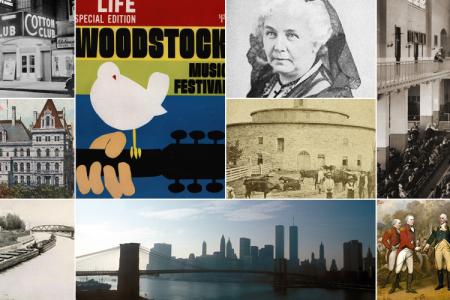Several months ago, New York State Historian Devin Lander sent out a survey to the various municipalities in New York about their local government historian. This survey included questions such as: salary, time spent at the post, college degree and type, the facilities offered to them as the municipal historian, who they reported to, and how important they rate the job of public historian. Among counties, there were 13 responses out of 62 counties. In total, the response rate for counties was 21%. This dropped minutely for towns, whose response rate was 20%, and dropped significantly for village whose response rate was less than 1%.
Of these responses, there were no reported vacancies in the counties or villages and only 6 reported vacancies in towns which is less than 3%. Four of these towns reported vacancies due to lack of interest, one because of fiscal restraint, and one because of both.
After breaking down the responses into counties, town, and villages, it was discovered that responding county historians make an average of $29,762, responding town historians make an average of $3,291 and responding village historians make an average of $233.
The average years served for responding county historians was 5 years, for town historians it was 11 years, and for village historians it was 12 years. Of these people, 4 county historians were full-time (31%), 8 town historians were full-time (5%), and none of the village historians were full-time.
A majority of reported historians have a college degree, whether in history or not. For counties, 9 out of the 13 (69%) had a degree of some kind (two were unknown). In towns this number dropped to 52% (17 were unknown). 50% of responding village historians had a degree (one was unknown).
In counties, 62% have an office space, 77% of historians have access to mail services, 69% have computer/printing access and 54% maintain a collection. In towns, 64% also have an office space, 85% have mail services, 77% have computer/printer access, and 78% maintain a collection. None of the responding villages had an office space for their historian, and only 75% had access to computers/printers, but all of them have access to mail services and maintains a collection.
On average, the county historian responds mainly to the county executive (23%, but occasionally to the county clerk (9%) or county manager (9%) This generally occurs Monthly (23%) or as needed (23%). The most common reports for town historians go to the Town Supervisor (46%) and Town Board (37%). The most common response for the frequency of report were monthly (16%), annually (20%) and as needed (37%). At the village level, 100% of respondents reported to the village board, either as needed (25%), quarterly (25%) or annually (25%).
Respondents were also asked to rate the position of public historian from essential, important, sometime important, or not important. 38% of counties, 51% of towns, and 75% of villages ranked the position as essential. 31% of counties, 38% of towns, and 25% of villages thought it was important. 7% of towns and 7% of counties thought it sometimes important and 3% of towns thought it was not important.
Local Government Historian Survey Data
Counties in New York: 62
Number of Responses: 13
Response rate: 21%
Towns in New York: 932
Number of Reponses: 181
Response rate: 20%
Villages in New York: 544
Number of Responses: 5
Response rate: .01%
Vacant Positions
Town: 6 out of 181 responses
Reasons for Vacancy
Lack of Interest: 5
Fiscal Constraint: 1
Average Salary
County: $29,762
Village: $233
Town: $3,291
Average Time Served as Historian
County: 5 years
Village: 12 years
Town: 11 years
Full Time Historians
County: 4 out of 13 31%
Village: 0 out of 4 0%
Town: 8 out of 176 5%
Part Time Historians
County: 9 out of 13 69%
Village: 4 out of 4 100%
Town: 168 out of 176 95%
College Degree in History or Related Field
County: 9 out of 13 69%
Village: 1 out of 4 25%
Town: 34 out of 176 19%
College Degree Other than History
County: 4 out of 13 31%
Village: 1 out of 4 25%
Town: 58 out of 176 33%
No College Degree
County: 1 out of 13 8%
Village: 1 out of 4 25%
Town: 67 out of 176 38%
Unknown Status of College Education
County: 2 out of 13 15%
Village: 1 out of 4 25%
Town: 17 out of 176 10%
Provided Office Space
County: 8 out of 13 62%
Village: 0 out of 4 0%
Town: 113 out of 176 64%
Have Mail Services
County: 10 out of 13 77%
Village: 4 out of 4 100%
Town: 149 out of 176 84%
Access to Computer/Printing
County: 9 out of 13 69%
Village: 3 out of 4 75%
Town: 136 out of 176 77%
Maintains Collections
County: 7 out of 13 54%
Village: 4 out of 4 100%
Town: 137 out of 176 78%
Rates of Importance: Essential
County: 5 out of 13 38%
Village: 3 out of 4 75%
Town: 90 out of 176 51%
Rates of Importance: Important
County: 5 out of 13 31%
Village: 1 out of 4 25%
Town: 66 out of 176 38%
Rates of Importance: Sometimes Important
County: 1 out of 13 7%
Village: 0 out of 4 0%
Town: 12 out of 176 7%
Rates of Importance: Not Important
County: 0 out of 13 0%
Village: 0 out of 4 0%
Town: 5 out of 176 3%



